
Crane Assisted Tree Removal
Emergency Tree Removal
Hazardous Tree Removal
If you are in need of tree removal call Arbormax Tree Service in Raleigh. We have been Safely removing trees for three generations and we have the equipment and experience to handle any of your tree removal needs.
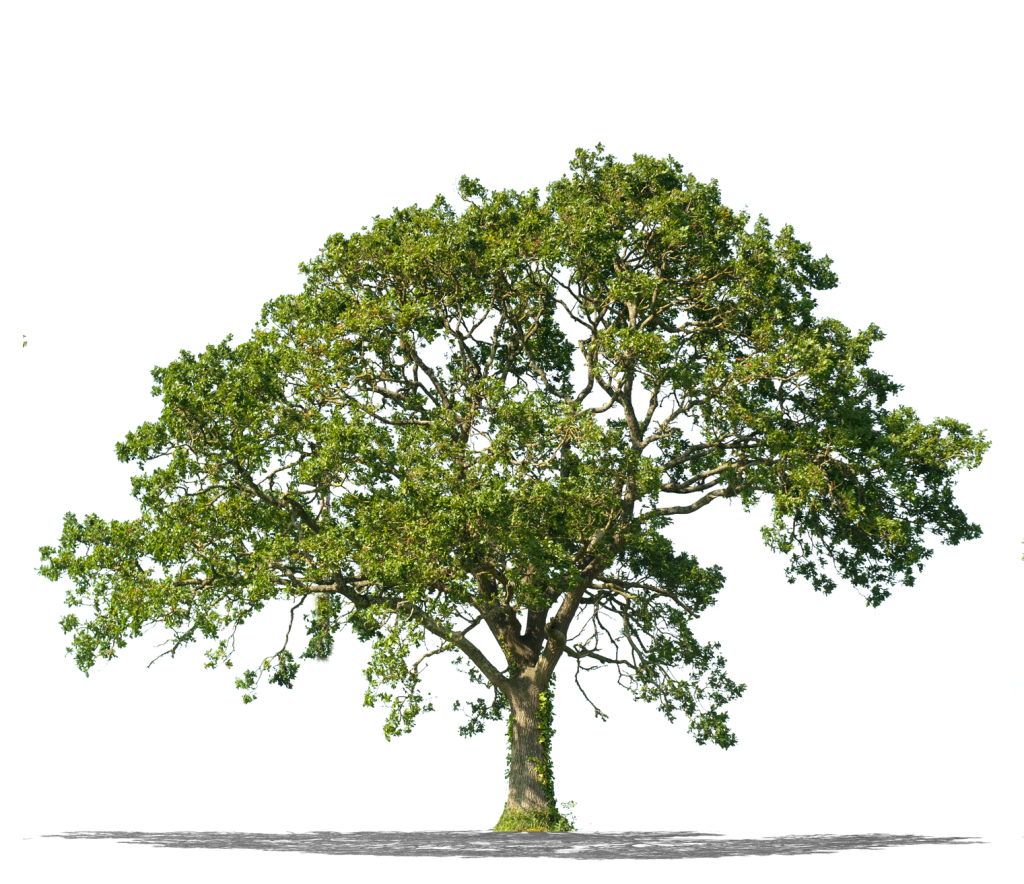 We are proud to say that we have safely removed over a half million trees throughout the years. But for us it goes farther than just removing a tree. Every tree that we remove, we want to do it the best, safest, most efficient and cost effective way possible. In order for us to accomplish this we have stayed on the cutting edge of advancements in our industry. We continually implement new practices and methods for removing trees. By staying current, we are able to offer you the best tree removal service possible at the lowest cost.
We are proud to say that we have safely removed over a half million trees throughout the years. But for us it goes farther than just removing a tree. Every tree that we remove, we want to do it the best, safest, most efficient and cost effective way possible. In order for us to accomplish this we have stayed on the cutting edge of advancements in our industry. We continually implement new practices and methods for removing trees. By staying current, we are able to offer you the best tree removal service possible at the lowest cost.
One thing we will never do is recommend tree removal when it is not warranted. It has become a common practice for less professional companies to instill a sense of fear in perspective clients. By telling them a tree has a higher probability of failure than it actually does. And of course you have companies on the opposite side of the spectrum that almost always recommend pruning and do not properly asses the risk of the tree. Our certified arborists have more experience with hazardous trees than anyone in our industry, and that’s a fact. They are properly trained in diagnosing hazardous trees and recognizing aggravating factors that may cause a tree to fail. Even though we love trees, we do not take a biased approach when evaluating them for risk. Our job is to provide you with all of the facts and help you to make an informed decision.
The basics of tree removal
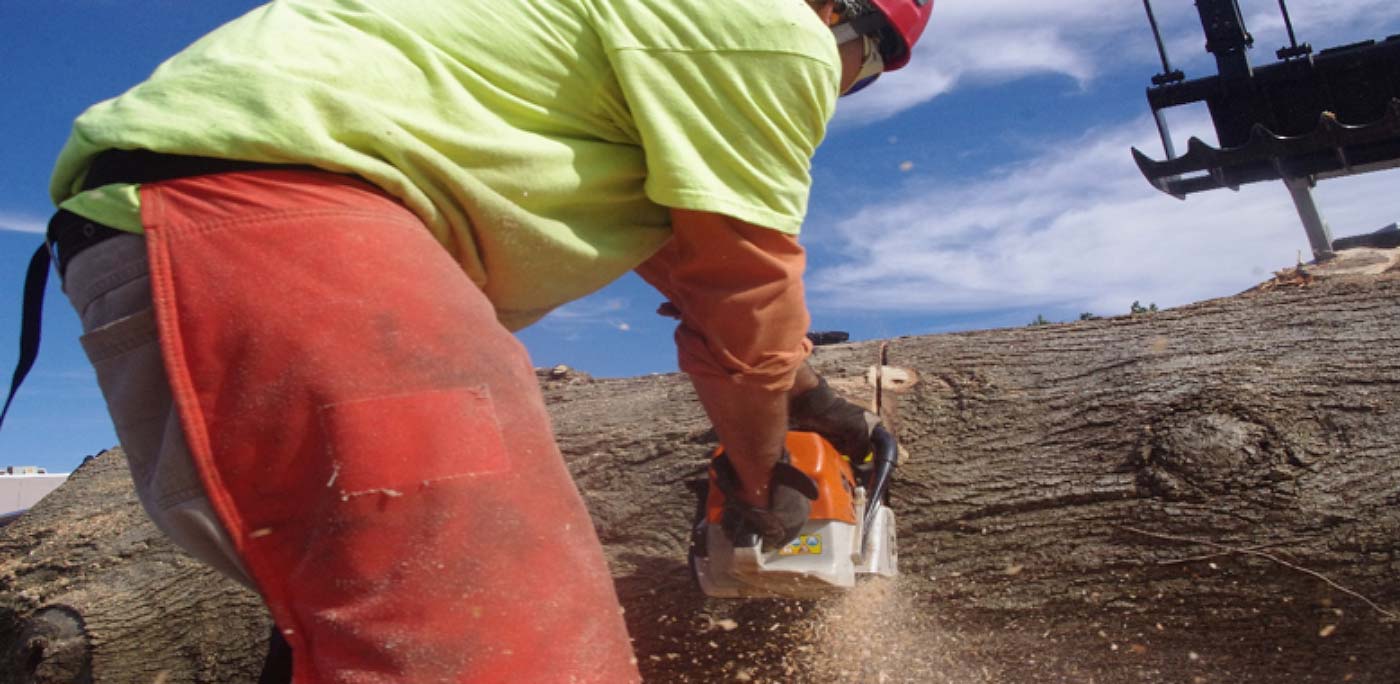
Please take the time to look over this page and get a better understanding of how we remove trees and what you can expect.
Most homeowners know very little about the tree removal process and what it takes to safely remove a tree. There are an infinite number of variables that come into play during the tree removal procedure. Every tree is unique and requires a different approach. There are various methods of tree removal that utilize different equipment and techniques. The following methods are the most common techniques used when removing trees.
Felling the entire tree.
This is the simplest process for getting the tree onto the ground. The first step is to estimate the trees height. After the trees height is determined the cutter will survey the area to see if there is enough room to safely drop the tree. In most urban settings there is not enough room to safely drop the entire tree and the tree must be taken apart in sections. If there is enough room. The cutter will judge the lean of the tree. He will check for symmetry to see if there is more weight on one side or the other. He will look for any defects in the trunk such as cavities or rot that could cause the notch to prematurely give way. All of this will tell the tree cutter what type of notch to use and where to put it. Before a notch is cut in the tree, a rope will be tied to the top of it.
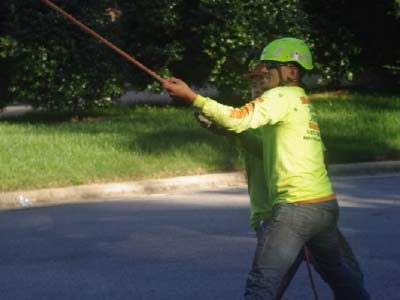


This will allow the tree removal crew to guide the tree in the desired direction. Once the tree is evaluated and the rope is set the cutting process will begin. A notch also known as a wedge will be cut to help direct the tree where to go. The final cut is also known as the back cut. When cutting the back cut the direction of the fall is able to be changed by cutting more or less of one side. The wood that is left between the back cut and the wedge is the hinge wood. Hinge wood holds the falling tree for a brief second and pulls it to the direction with more hinge wood.
Climbing and lowering the tree in sections.
This is the most common tree removal process for removing trees that are close to structures, power lines and other obstacles. Like any other tree removal process it starts with evaluating the tree and formulating a plan for removal. A good tree climber like the ones we have here at Arbormax will dismantle the entire tree in their mind before they ever touch it. The most important part about planning the tree removal is finding a central point to set your rigging from. Once the rigging has been set in place the climber will cut and lower all necessary limbs. After all of the limbs have been removed and only the trunk remains he will cut the trunk into the desired lengths. Sometimes these pieces will be cut and dropped to the ground. If there is not enough room to simply drop the pieces they will be lowered with ropes. A climber must know which direction to notch and the cut limbs and logs so they swing only the desired direction and distance. Skilled grounds personnel are as important as the climber. They must be able to properly guide the limb when it is cut free. Once the limb is severed the rope man will allow it to freefall for a brief moment and then gradually decrease the descent of the limb. This will reduce the static load that is placed on the rigging point. There is always a specific landing zone for the branches and logs to be roped into. Sometimes the landing is directly below the rigging point and simply lowering it is sufficient. But occasionally landing areas can be 20-30 feet from the rig point. The rope man has to time the swing rate and descent speed accurately to hit his target. If the ground man holds the rope one second to long or to little it could have serious consequences. Property damage, personal injury and even death. Never let an untrained person climb person climb or cut a tree for you.
Tree removal using a crane
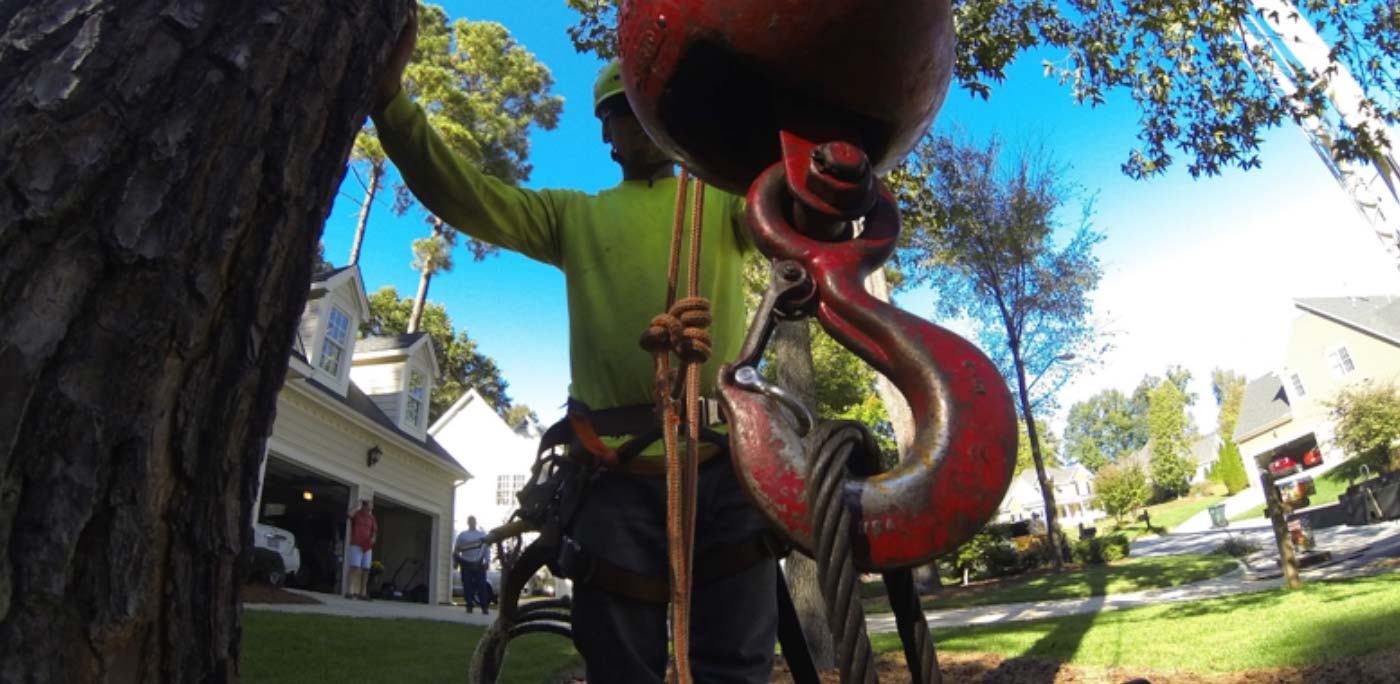
This is the most up to date, safest and efficient way to remove a tree. It is also what we are best at. We love using our cranes to delicately and effortlessly remove trees and gracefully fly the massive pieces of trees through the air. Simply put it is Awesome! The tree removal process starts by finding a place to set the crane up. This is usually discussed with the property owner during the estimating process. This place must have enough room to accommodate the 18x 24 foot footprint of the outriggers and be somewhat level. It must also be within the safe operating radius of the trees. The size of the tree to be removed plays a role in determining the safe operating radius. Our cranes have 165 feet of boom and jib when fully extended which is approximately the height of a fifteen story building. Height isn’t usually our main concern though. Its distance, the farther you reach away from the crane the less you can pick up. As a rule of thumb our general operating radius is 90 ft. For smaller trees we can go 135 foot away from the crane. Once we have set the crane up and leveled it the operator will telescope the boom out and put it in place over the tree that is to be removed. The crane ball will then be lowered to the climber who is waiting at the base of the tree. He will tie his safety line in and be hoisted to the top of the tree. Once he has reached the top of the tree he will attach the cable and instruct the operator to apply tension. He will then repel down his rope to the predetermined cut area. Once he is tied in he makes the cut. The crane operator lifts the cut section off of the tree and swings it to the landing zone. Once in the landing zone the ground crew will disconnect the cable so the crane operator and climber can make the next pick. This process is repeated until the tree has been removed please visit our Crane assisted tree removal page for more info.
Ground operations and debris removal
Above are three methods of getting the tree on the ground. But we haven’t said anything about what happens once it is there. When it hits the ground is when the magic happens. That’s when the hardest working men you have ever seen come into play. Our ground operations specialists have been compared to angry termites with chainsaws and beavers on steroids. Their work is often compared to that of a well orchestrated ballet, where everyone is in sync. They have been known to dismantle entire pine trees in seconds. These guys really know what to do when the wood hits the ground. Everything that we cut and remove is used. 100% no exceptions. The ground crew will instinctively cut everything to spec so that it can be placed on the right truck. All limbs, branches and logs under 12 inches will be ran through the wood chipper and turned into usable mulch. All wood over ten inches in diameter will be cut into log lengths. These logs will go to various mills to be turned into products like paper, lumber and furniture. Once all of the large pieces of the tree have been removed the crew will then rake and blow the yard. They always leave the yard cleaner than they found it.
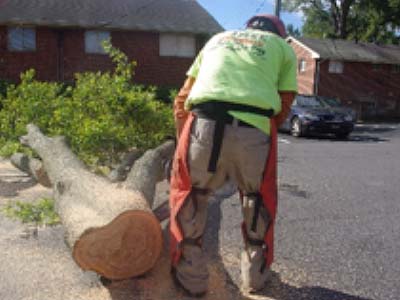
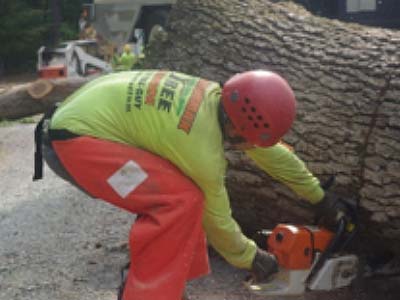

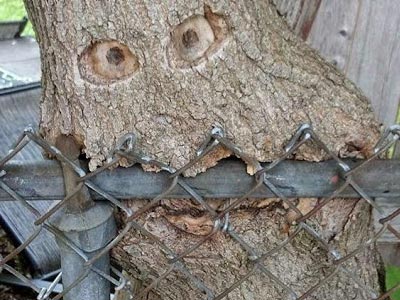
Trees Can Be Monsters
Below are typical reasons for removing trees. If you have any of the following situations please call us and we can send an arborists out for a free consultation.
Dead Tree
Trees that are dead should be removed as soon as possible. The longer you wait to take a dead tree down the more unstable the wood becomes. If a tree is left for too long it will not be able to be climbed and will require specialty equipment. This will increase the tree removal cost substantially. Some signs that your tree is dead are.
- There is an absence of leaves when there should be leaves.
- Large pieces of bark are separating from the trunk.
- The tree is dropping large limbs
Dying or declining trees
Declining and dying trees should be removed before they die completely. This will make the tree removal process safer and easier therefore cheaper. Some signs that you have a dying tree include.
- Bare branches throughout the tree.
- Leaves turning brown
- Falling limbs
Structurally unstable trees
- There are a multitude of things that can cause a tree to be deemed structurally unstable. Some of the following would warrant the immediate removal of a tree and you should keep an eye out for them.
- Lateral or vertical cracks in the trunk of the tree
- Large cavities in the trunk from old pruning wounds
- Decaying roots
- The presence of diseases that cause abnormal growth patterns ex. (fusi-form Rust)
Aesthetically Challenged trees
Sometimes we have to take a tree down because it’s just too dang ugly. Remember beauty is in the eye of the beholder and landscapes require diversity to be complete. Not all crooked trees should be removed. But if you have one that is just hideous and you can’t take it anymore. Call us out and we will cut it down for you.
Overcrowded area
Trees grow best when they do not have to compete with one another. This doesn’t necessarily mean that you should cut down 16 Maple trees so your 1 tulip poplar can develop. This is where our arborists come into play. We will gladly come out and explain in detail which trees should be removed or pruned so others can develop.
Landscape needs
We are often the first step in a new landscaping process. Tree removal is usually incorporated into new landscape designs. We worked closely with landscape architects to ensure we meet all of the landscaping goals. Whether you are a landscape architect or a homeowner, if you are embarking on a new project we would be glad to help.
If any of the above apply to you or if you have any other reason for removing a tree we are the company for you. We have the equipment and expertise to handle any tree removal project no matter how big or small. Please take a moment to review some of our previous tree removal projects. Link to page
We provide tree removal services to all of Raleigh, Cary, Durham, Chapel Hill, Garner, Apex, Fuquay Varina, Holly Springs, Clayton, Wake Forest and the surrounding Areas.
